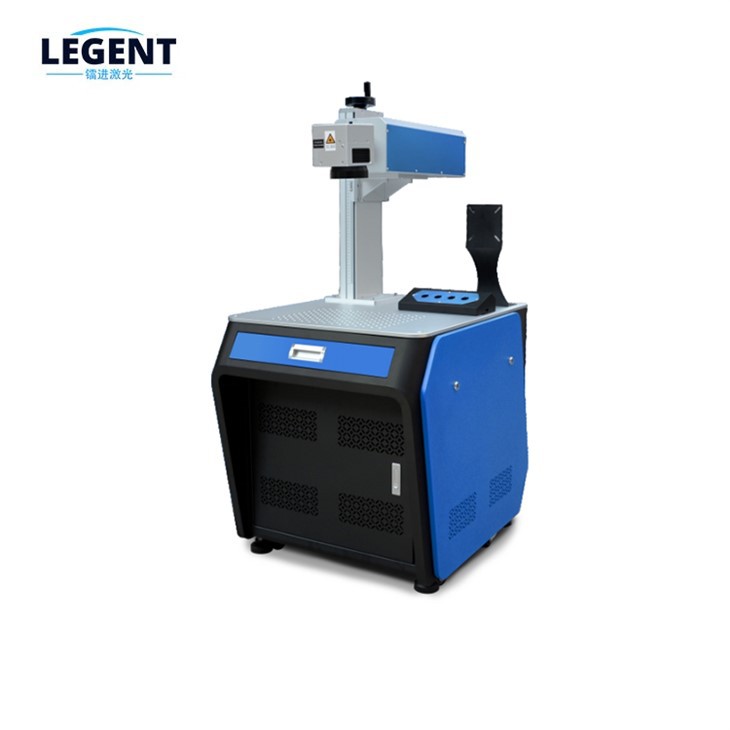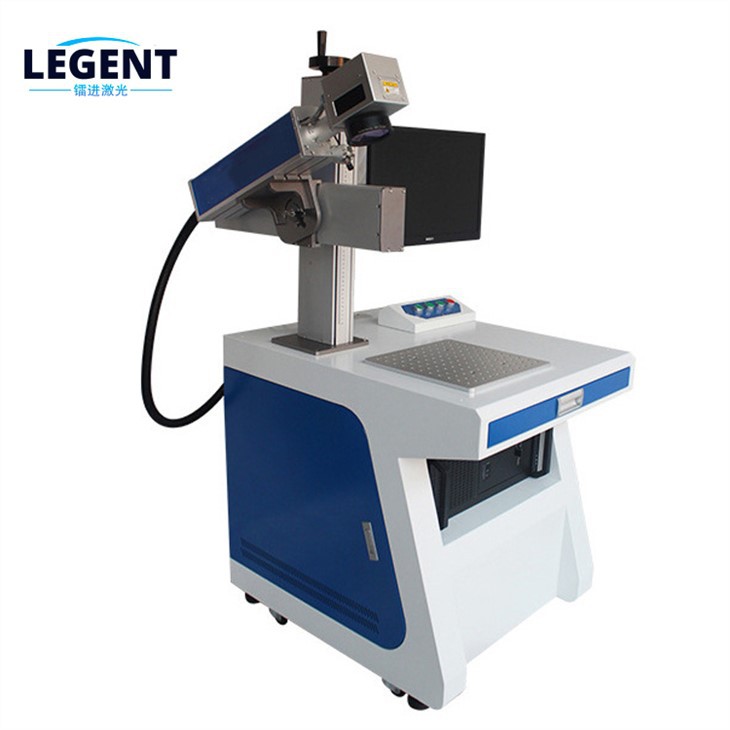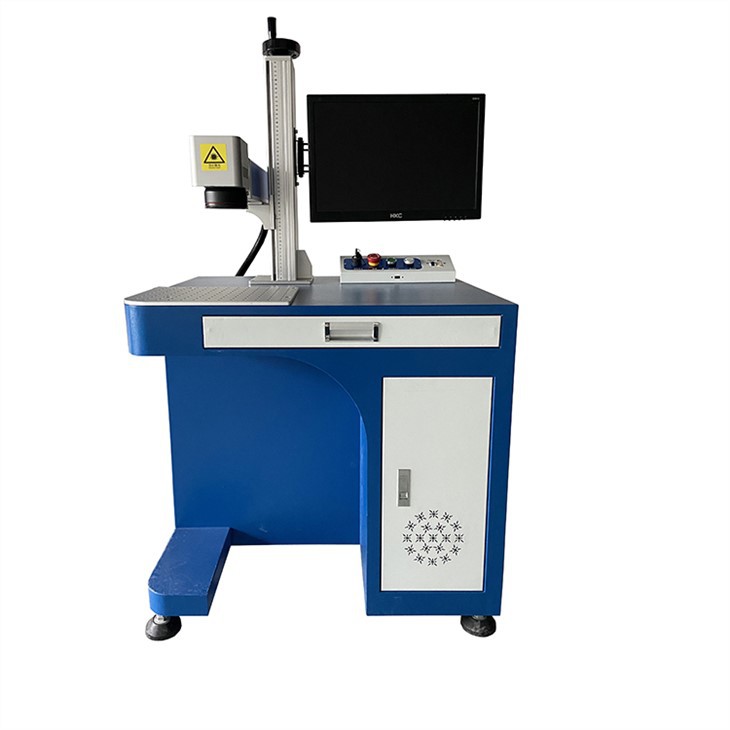Legent Laser Technology Co., Ltd.: Your Trustworthy CO2 Laser Marking Machine Manufacturer!
Our company was founded in 2010. It is a high-tech enterprise integrating R&D, production and sales of laser cleaning equipment, laser marking equipment, laser welding equipment, machine vision and related application control systems. Our team of optical, mechanical and software design experts develops complete laser solutions and various high-performance laser machines for marking, cleaning and welding.
Rich Product Range
We can produce laser cleaning machines, fiber laser marking machines, UV laser marking machines, CO2 laser marking machines, flying laser marking machines, dynamic focusing laser marking machines, automatic laser marking machines, large-format laser marking machines, laser welding machines, etc.
Leading Service
We have many years of industry experience and a complete production management, quality supervision, sales service operation system. Whether you want to buy a laser cleaning machine or a flying laser marking machine, just send your requirements by email and we can customize the product for you.
Wide Sales Area
Our laser equipment has been sold to more than 50 countries and regions around the world, including the United States, Germany, Italy, India, South Africa, Japan, Canada, etc.
Wide Scope of Cooperation
We have reached cooperation with more than 100 users in various industrial manufacturing fields such as aerospace, rail transportation, automobile manufacturing, precision machinery, electronics and electrical appliances, jewelry, craft gifts, etc., and finally completed more than 150 industry-specific laser application solutions.
 Laser Marker Co2 Laser Engraving Machine
Laser Marker Co2 Laser Engraving MachineProduct Deascription CO2 marking machines produce permanent marks on the surface of nonmetallic and organic materials by electronically stimulating carbon dioxide gas emissions. Feature High quality
Add to Inquiry 30w 50w CO2 Laser Marking Machine
30w 50w CO2 Laser Marking MachineCO2 laser marking machine is a laser etching machine that uses CO2 laser beam to engrave marks on 2D or 3D surfaces of wood, leather, cloth, bamboo, paper, ABS, PVC, epoxy resin, acrylic, glass,
Add to Inquiry CO2 Laser Marking Machine for Leather
CO2 Laser Marking Machine for LeatherLeather can be a difficult material to handle for traditional tools such as blades. Tools for working with leather inevitably experience a lot of wear and tear and require regular maintenance.
Add to Inquiry CO2 Laser Marking Machine for Non Metal
CO2 Laser Marking Machine for Non MetalLegend's CO2 laser marking machines are widely used on most non-metallic materials, such as ceramics, PVC, ABS, acrylic, plastic, bamboo, organic materials, epoxy resin, glass, wood, and paper.
Add to Inquiry Desktop CO2 Marking Machine
Desktop CO2 Marking MachineOur CO2 laser marking machine adopts imported packaged CO2 laser, equipped with high-speed scanning galvanometer and beam expansion focusing system, with high marking accuracy, large marking range
Add to Inquiry CO2 Laser Marking Machine for Clothing
CO2 Laser Marking Machine for ClothingIn the clothing industry, laser marking machines have incredible precision and can directly engrave many different patterns or text on fabrics without reducing the durability of the material.
Add to Inquiry
What is CO2 Laser Marking Machine
A CO2 laser marking machine is a device that uses a carbon dioxide (CO2) laser to engrave or mark various materials with permanent and high-contrast designs, text, or barcodes. The CO2 laser operates at a wavelength of 10.6 micrometers and is typically used for non-metallic materials such as plastics, acrylics, glass, wood, and certain types of paper and cardboard.
Features of CO2 Laser Marking Machine
High Marking Speed and Accuracy
CO2 laser marking machines have high-speed marking, and their accuracy is also very high. This feature makes them efficient for marking products in large quantities, as the machine can produce hundreds of pieces in a matter of minutes with high precision. This reduces production time, increases efficiency, and saves labor costs.
Non-Contact Marking
CO2 laser marking machines work on the basis of non-contact marking, which means the laser beam does not directly touch the surface being marked. Consequently, it does not cause any mechanical deformation or damage to the materials being marked. This ensures the quality of the product being marked as well as longevity.
Versatility
CO2 laser marking machines are versatile and can be used to mark almost all kinds of materials, including plastic, glass, leather, wood, paper, and metal. The flexibility of this marking method means that one machine can be used for different materials and applications, increasing cost-efficiency and reducing space occupation.
Low Maintenance
CO2 laser marking machines require minimal maintenance compared to other marking methods like inkjet or dot-matrix methods. They have fewer moving parts and require less frequent replacement of parts, making them cost-effective for long-term use.
Parts of CO2 Laser Marking Machine




Laser Source
The heart of the machine, a CO2 laser tube, emits the laser beam necessary for marking. The tube contains a mixture of gases (carbon dioxide, nitrogen, and helium) that, when excited by an electrical current, produce a coherent beam of light at a wavelength of 10.6 micrometers.
Beam Expander
After leaving the laser source, the beam may need to be expanded to ensure it covers the desired area of the material. This is achieved using a beam expander.
Beam Conditioner
This component further shapes and conditions the laser beam, ensuring it has the correct intensity and focus for the marking process. It often includes lenses and mirrors.
Scanning System
Comprised of two galvanometer-controlled mirrors (scanners), this system rapidly deflects the laser beam across the material's surface to create the desired mark. The scanning system enables high-speed marking while maintaining precision.
Focusing Lens
A lens is used to focus the laser beam to a small spot size, which increases the energy density at the focal point and allows for deeper and more precise marking.
Control System
A computerized control system, usually equipped with specialized software, allows the user to design the markings and control the movement of the laser beam. It also manages the power output and speed of the marking process.
Work Table/Positioning System
The work table holds the material to be marked. In some systems, the table can move along multiple axes (often X, Y, and sometimes Z) to position the material accurately under the laser beam.
Exhaust System
Since the marking process involves vaporizing material, an exhaust system is crucial to remove the resulting smoke and debris. Fume extraction fans and filters are commonly used to maintain a safe working environment.
Chiller
The laser tube generates heat during operation and requires a chiller to maintain a stable temperature. The chiller circulates coolant around the laser tube to dissipate the heat.
Frame/Enclosure
The entire setup is housed within a sturdy frame or enclosure that protects the user from the laser beam and any flying debris. It also ensures that the internal components are secure and properly aligned.
Material Properties
Each material that can be marked has different absorption rates, heat resistance levels, and distinguishing characteristics. All of these must be weighed when choosing the right marking machines to work with for traceability purposes.
Desired Outcome
Factors like the marking quality, depth, and durability also make a big difference when evaluating what marking machine will fit best with your production needs.
Environmental Considerations
These marks are meant to last throughout the lifespan of the product. However, for parts that are used in space, for example, the rate of exposure to elements and temperature changes dictate which marking method would be preferable. (And different parts used in aerospace production are marked differently. Check out our blog Laser Marking vs Dot Peen Marking Machines: Best Use Case by Industry for more info on that.)
Regulatory and Safety Standards
The regulations for part durability and traceability are different for the various industries that rely on part marking for different reasons. Therefore, the part marking must meet various standards while supplying reliability in the long term.
Working Principle of CO2 Laser Marking Machine
Generation of the Laser Beam
Inside the laser source, a CO2 gas mixture is electrically stimulated. This causes the atoms within the gas to release photons, generating a coherent laser beam with a wavelength of 10.6 micrometers.
Beam Control
The laser beam is directed out of the laser tube and passes through a series of optical components, including a beam expander and beam conditioner. These components help shape the beam, adjusting its size and quality to ensure it's suitable for marking.
Scanning and Focusing
The beam then reaches the scanning system, consisting of two mirrors (galvanometers) controlled by motors. These mirrors rapidly deflect the beam back and forth across the material's surface, following the pattern designed by the operator using the control software. Meanwhile, a focusing lens concentrates the laser beam to a fine point, increasing the energy density and allowing for precise marking.
Material Interaction
As the focused laser beam strikes the material, it transfers energy to the surface molecules, causing them to vibrate and absorb the laser's energy. This absorption results in localized heating, melting, or vaporization of the material, effectively removing a thin layer and creating a mark.
Mark Formation
The depth and appearance of the mark depend on several factors, including the laser's power, the material's properties, the scanning speed, and the focus settings. By carefully controlling these parameters, operators can produce a wide range of mark types, from simple lines and text to complex images and barcodes.
Cooling and Maintenance
The laser tube generates heat during operation and must be cooled to maintain performance and longevity. A chiller circulates coolant around the tube, absorbing excess heat and dissipating it into the environment. Additionally, regular maintenance of the optical components and exhaust system is essential to ensure optimal performance and extend the machine's lifespan.
How to Maintain CO2 Laser Marking Machine
Precautions Before Use
Before using the CO2 Laser Marking Machine, several precautions must be taken to ensure safe and efficient operation. Firstly, always wear safety gear such as safety glasses, gloves, or any other required personal PPE. Secondly, ensure proper ventilation in the working area. It prevents the accumulation of fumes and smoke produced during marking. Thirdly, confirm that the material to be marked is compatible with the laser’s wavelength. Always use the recommended materials by the manufacturer. Fourthly, secure the work area and ensure it is clean, organized, and free from potential hazards. Finally, always familiarize yourself with emergency shutdown procedures. Find the location of the emergency stop button.
Daily Maintenance
Wipe down the dust and debris after or before using the CO2 Laser Marking Machine. Ensure the exterior surface, focusing lens, and galvanometer mirrors are clean and ready to use. Secondly, verify that the laser beam is correctly aligned and focused for precise marking. Make necessary changes if required. You can use the adjustment screw to align the height of the galvanometer. Thirdly, ensure the cooling system is functioning correctly. In addition, check that the water or cooling fluids are at the correct levels. Fourthly, confirm that the operation switches are expected and effective.
Weekly Maintenance
A weekly maintenance routine contributes to the longevity of the device. Firstly, clean the optical path components, including mirrors and lenses. It prevents any buildup that could affect marking quality. Secondly, check whether the laser light output is expected and open the laser marking software. And then start manual marking for laser testing. Thirdly, verify if you can turn on the red light preview. Ensure the laser parameters are within the designated range. In addition, enable the red light correction feature within the laser marking software.
Monthly Maintenance
Monthly maintenance focuses on deeper checks and cleaning. It involves checking the laser sources and control unit. Firstly, check whether the laser emitted is expected. If it has weakened, use a power meter to test and conduct necessary solutions. Secondly, inspect if the power plug and connectors of the connecting cables are secure. If there are any loose contacts, take action immediately. Thirdly, clear dust from the laser’s air outlet to maintain proper heat dissipation. Remove foreign particles and debris from the device using a vacuum cleaner, alcohol, and a dust-free cloth.
Applications of CO2 Laser Marking Machine
Product Identification and Branding
CO2 laser marking machines are used to mark logos, serial numbers, barcodes, and other identification information onto products. This is common in industries like electronics, automotive, aerospace, and medical devices.
Packaging and Labeling
CO2 lasers can mark expiration dates, batch numbers, and other information onto packaging materials such as cardboard, paper, plastics, and foils. This helps with traceability and anti-counterfeiting measures.
Medical Device Marking
CO2 lasers are used to mark medical devices such as surgical instruments, implants, and equipment with serial numbers, regulatory symbols, and other required information. The precise marking ensures compliance and enhances patient safety.
Industrial Manufacturing
CO2 lasers are used in industrial manufacturing processes for marking metal, wood, ceramics, and glass. They can engrave part numbers, logos, and other information onto components and products.
Jewelry and Personalization
CO2 lasers are commonly used in the jewelry industry for engraving designs, initials, and custom messages onto metal surfaces. They are also used for personalizing items like trophies, gifts, and promotional items.
Frequently Asked Questions
We're well-known as one of the leading co2 laser marking machine manufacturers and suppliers in China. If you're going to buy high quality co2 laser marking machine with competitive price, welcome to get pricelist and quotation from our factory. Also, customized service is available.
co2 laser marking machine with ce, CO2 Laser Marking Machine for Clothing, optical fiber laser marking machine




